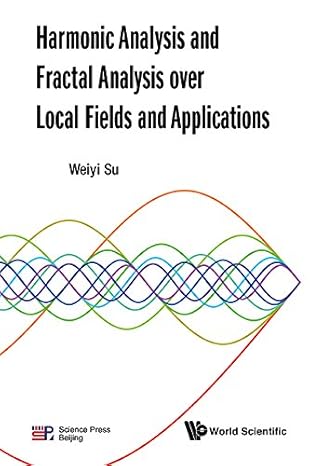For AP® Calculus AB and BC
This course is available on MyMathLab® for School.
The sixth edition of Calculus: Graphical, Numerical, Algebraic, AP* Edition, by Demana,
Waits, Kennedy, Bressoud, and Boardman completely supports the content, philosophy,
and goals of the Advanced Placement (AP*) Calculus courses (AB and BC).
The College Board recently finished a lengthy and thorough review of the AP* Calculus
courses to ensure that they were consistent with the best college and university courses
with similar educational goals. This review resulted in a repackaging of the course descriptions
in terms of big ideas, enduring understandings, learning objectives, and essential
knowledge, but the learning goals remained essentially the same. That allowed us to retain
the overall flow of our previous edition and concentrate our attention on how we might be
more helpful to you and your students in certain parts of the course.
A very broad look at the overall goals of this text is given in the following bulleted summary.
Although these are not explicit goals of the AP program and do not include all of the
learning objectives in the new AP Curriculum Framework, they do reflect the intentions of
the AP Calculus program. (Note that the goals preceded by an asterisk are aligned with the BC course and are not required in AB Calculus.)
• Students will be able to work with functions represented graphically, numerically, analytically,
or verbally and will understand the connections among these representations;
graphing calculators will be used as a tool to facilitate such understanding.
• Students will, in the process of solving problems, be able to use graphing calculators to
graph functions, solve equations, evaluate numerical derivatives, and evaluate numerical
integrals.
• Students will understand the meaning of the derivative as a limit of a difference quotient
and will understand its connection to local linearity and instantaneous rates of change.
• Students will understand the meaning of the definite integral as a limit of Riemann
sums and as a net accumulation of change over an interval, and they will understand and
appreciate the connection between derivatives and integrals.
• Students will be able to model real-world behavior and solve a variety of problems
using functions, derivatives, and integrals; they will also be able to communicate solutions
effectively, using proper mathematical language and syntax.
• Students will be able to represent and interpret differential equations geometrically with
slope fields and (*) numerically with Euler’s method; they will be able to model dynamic
situations with differential equations and solve initial value problems analytically.
(*) Students will understand the convergence and divergence of infinite series and will
be able to represent functions with Maclaurin and Taylor series; they will be able to
approximate or bound truncation errors in various ways.
(*) Students will be able to extend some calculus results to the context of motion in the
plane (through vectors) and to the analysis of polar curves.
Changes to This Edition:
The big change in this new edition, of course, is that we welcome Michael Boardman to the author team. As a college mathematician with years of experience with the Advanced Placement (AP) program, he is well acquainted with the scope and goals of the course, and he is well versed in the mathematics that calculus students should know. Not only was Michael chief reader of the AP Calculus exams for four years, but he also served five years on the Development Committee and five years on the AP Calculus Workgroup for ETS. As perhaps his signal achievement, he founded the online discussion group for AP Calculus teachers and moderated it for a decade, so he truly understands what AP teachers
and students are looking for in these pages.
A Few Global Changes
As with previous editions, we have kept our focus on high school students taking one of the College Board’s AP courses, Calculus AB or Calculus BC. The topics in the text reflect both the curriculum and the pedagogy of an AP course, and we do what we can to prepare students for the AP examinations throughout the text. To be consistent with the AP exam, we have changed all multiple-choice questions in the exercises to show four options rather than five. Also, as free-response questions on the AP examinations continue to evolve in focus and style, we have added or amended our exercises to reflect those changes. Although the role of graphing calculators in the course has not changed significantly since the fifth edition, we continue to review the gray “no calculator” ovals in the exercise sets to reflect an emerging consensus among calculus teachers that not every problem that can be solved without a calculator ought to be solved without a calculator.
We have further expanded the treatment of the derivative as a measure of sensitivity, which now appears as an ongoing topic in several different sections of the text. We have also enhanced our commitment to point-slope form for linear equations throughout the text, writing them all in a form that emphasizes the concept of local linearity, critical for understanding differential calculus.
Two new features have been added in response to the MPACs. There are now Notational Fluency Notes sprinkled throughout the text, and each set of Chapter Review Exercises begins with Reasoning with Definitions and Theorems questions that require students (individually or with their classmates) to dig more deeply into the concepts of calculus in order to understand them better.
Most of the motivational “Chapter Opener” problems are new and improved in this edition, and (thanks to David) many more historical nuggets have been sprinkled throughout the book. We also confess that some of the nuggets that were already there were in need of refinement. For example, the curious object called Gabriel’s Horn in previous editions is now called Torricelli’s Trumpet, with an accompanying historical note to give full credit where credit is due.
Finally, be assured that we have looked carefully at the content of the new AP Calculus Curriculum Framework, and there is nothing therein that is not covered in this text. Moreover, the emphases are in harmony with the objectives of the AP course, as they have always been.
چکیده فارسی
برای AP® Calculus AB و BC
این دوره در MyMathLab® for School در دسترس است.
ویرایش ششم حساب: گرافیک، عددی، جبری، نسخه AP*، توسط Demana،
Waits، Kennedy، Bressoud و Boardman کاملاً از محتوا، فلسفه، پشتیبانی می کنند
و اهداف دوره های حسابداری پیشرفته (AP*) (AB و BC).
هیئت کالج اخیراً بررسی طولانی و کامل حساب AP* را به پایان رسانده است
دوره هایی برای اطمینان از سازگاری آنها با بهترین دوره های کالج و دانشگاه
با اهداف آموزشی مشابه این بررسی منجر به بسته بندی مجدد توضیحات دوره شد
از نظر ایده های بزرگ، درک پایدار، اهداف یادگیری و ضروری
دانش، اما اهداف یادگیری اساسا یکسان باقی ماندند. این به ما اجازه داد
را حفظ کنیم
جریان کلی نسخه قبلی ما و توجه خود را بر چگونگی بودن خود متمرکز کنیم
در بخش های خاصی از دوره برای شما و دانش آموزانتان مفیدتر است.
نگاهی بسیار گسترده به اهداف کلی این متن در خلاصه گلوله ای زیر ارائه شده است.
اگرچه اینها اهداف صریح برنامه AP نیستند و همه
را شامل نمی شوند
اهداف یادگیری در چارچوب برنامه درسی جدید AP، منعکس کننده مقاصد
هستند.
برنامه AP Calculus (توجه داشته باشید که اهداف قبل از ستاره با دوره BC همسو هستند و در AB Calculus مورد نیاز نیستند.)
• دانش آموزان قادر خواهند بود با توابع نمایش داده شده به صورت گرافیکی، عددی، تحلیلی، کار کنند
یا به صورت شفاهی و ارتباط بین این بازنمودها را درک خواهد کرد؛
ماشین حساب های نموداری به عنوان ابزاری برای تسهیل چنین درک استفاده خواهند شد.
• دانش آموزان در فرآیند حل مسائل، می توانند از ماشین حساب های نموداری برای
استفاده کنند.
توابع نمودار، حل معادلات، ارزیابی مشتقات عددی و ارزیابی عددی
انتگرال.
• دانش آموزان معنای مشتق را به عنوان حد یک ضریب اختلاف درک خواهند کرد
و ارتباط آن با خطی بودن محلی و نرخ های لحظه ای تغییر را درک خواهد کرد.
• دانش آموزان معنای انتگرال معین را به عنوان حدی از ریمان درک خواهند کرد
مبالغ و به عنوان یک انباشت خالص تغییر در یک بازه زمانی، و آنها را درک خواهند کرد و
ارتباط بین مشتقات و انتگرال ها را درک کنید.
• دانش آموزان قادر خواهند بود رفتار دنیای واقعی را مدل کنند و مسائل مختلفی را حل کنند
استفاده از توابع، مشتقات و انتگرال ها؛ آنها همچنین قادر به برقراری ارتباط راه حل ها خواهند بود
به طور موثر، با استفاده از زبان ریاضی و نحو مناسب.
• دانش آموزان قادر خواهند بود معادلات دیفرانسیل را به صورت هندسی با
نشان دهند و تفسیر کنند
فیلدهای شیب و (*) عددی با روش اویلر. آنها قادر خواهند بود پویا را مدل کنند
موقعیت ها با معادلات دیفرانسیل و حل مسائل مقدار اولیه به صورت تحلیلی.
(*) دانش آموزان همگرایی و واگرایی سری های نامتناهی را درک خواهند کرد و
قادر به نمایش توابع با سری Maclaurin و Taylor باشد. آنها قادر خواهند بود
خطاهای برش تقریبی یا محدود به طرق مختلف.
(*) دانش آموزان می توانند برخی از نتایج حساب دیفرانسیل و انتگرال را به زمینه حرکت در
بسط دهند.
صفحه (از طریق بردارها) و به تجزیه و تحلیل منحنی های قطبی.
تغییرات در این نسخه:
البته تغییر بزرگ در این نسخه جدید این است که ما از مایکل بوردمن به تیم نویسنده استقبال می کنیم. او به عنوان یک ریاضیدان کالج با سال ها تجربه در برنامه Advanced Placement (AP) به خوبی با دامنه و اهداف دوره آشنا است و به خوبی در ریاضیاتی که دانش آموزان حساب دیفرانسیل و انتگرال باید بدانند، آشنا است. مایکل نه تنها به مدت چهار سال خواننده ارشد آزمون حسابان AP بود، بلکه پنج سال در کمیته توسعه و پنج سال در گروه کاری AP Calculus برای ETS خدمت کرد. به عنوان دستاورد مهم او، او گروه بحث آنلاین را برای معلمان حساب دیفرانسیل و انتگرال تاسیس کرد و آن را برای یک دهه تعدیل کرد، بنابراین او واقعاً میداند که معلمان AP چه چیزی را میدانند
و دانش آموزان در این صفحات به دنبال آن هستند.
چند تغییر جهانی
مانند نسخههای قبلی، ما تمرکز خود را بر دانشآموزان دبیرستانی که یکی از دورههای AP هیئت کالج، Calculus AB یا Calculus BC را میگذرانند، حفظ کردهایم. موضوعات موجود در متن منعکس کننده برنامه درسی و آموزش یک دوره AP است و ما هر کاری که می توانیم انجام می دهیم تا دانش آموزان را برای امتحانات AP در سراسر متن آماده کنیم. برای سازگاری با آزمون AP، ما تمام سوالات چند گزینه ای در تمرین ها را تغییر داده ایم تا به جای پنج گزینه، چهار گزینه را نشان دهیم. همچنین، از آنجایی که سوالات بدون پاسخ در امتحانات AP همچنان از نظر تمرکز و سبک تکامل مییابند، تمرینهای خود را اضافه کرده یا اصلاح کردهایم تا آن تغییرات را منعکس کنیم. اگرچه نقش ماشینحسابهای نموداری در دوره از ویرایش پنجم تغییر قابلتوجهی نکرده است، ما همچنان بیضیهای خاکستری «بدون ماشین حساب» را در مجموعههای تمرین مرور میکنیم تا اجماع در حال ظهور در بین معلمان حساب دیفرانسیل و انتگرال را منعکس کنیم که هر مشکلی را نمیتوان بدون آن حل کرد. یک ماشین حساب باید بدون ماشین حساب حل شود.
ما درمان مشتق را به عنوان معیار حساسیت، که اکنون به عنوان یک موضوع در حال انجام در چندین بخش مختلف متن ظاهر می شود، بیشتر گسترش داده ایم. ما همچنین تعهد خود را به شکل نقطه شیب برای معادلات خطی در سراسر متن افزایش دادهایم و همه آنها را به شکلی مینویسیم که بر مفهوم خطی بودن محلی تأکید میکند و برای درک حساب دیفرانسیل حیاتی است.
دو ویژگی جدید در پاسخ به MPAC ها اضافه شده است. در حال حاضر یادداشتهای روانی نمادی در سراسر متن پاشیده شده است، و هر مجموعه از تمرینهای مرور فصل با سوالات استدلال با تعاریف و قضایا شروع میشود که دانشآموزان را (بهتنهایی یا با همکلاسیهای خود) میخواهد عمیقتر مفاهیم حساب دیفرانسیل و انتگرال را به منظور درک آنها بررسی کنند. بهتر است.
بیشتر مشکلات انگیزشی «فصل بازکننده» در این نسخه جدید و بهبود یافته است، و (به لطف دیوید) تعداد زیادی تکه تاریخی دیگر در سراسر کتاب پاشیده شده است. ما همچنین اعتراف می کنیم که برخی از قطعاتی که قبلاً آنجا بودند نیاز به اصلاح داشتند. به عنوان مثال، شیء کنجکاوی به نام شاخ گابریل در نسخههای قبلی، اکنون شیپور توریچلی نامیده میشود، با یک یادداشت تاریخی همراه برای اعتبار کامل در مورد اعتبار.
در نهایت، مطمئن باشید که ما با دقت به محتوای چارچوب برنامه درسی حساب دیفرانسیل و انتگرال جدید AP نگاه کردهایم، و چیزی در آن وجود ندارد که در این متن پوشش داده نشده باشد. علاوه بر این، تاکیدات با اهداف دوره AP هماهنگ است، همانطور که همیشه بوده است.
ادامه ...
بستن ...
![Calculus: Graphical, Numerical, Algebraic, AP Edition (6th Edition) [2020] - Original PDF Calculus: Graphical, Numerical, Algebraic, AP Edition (6th Edition) [2020] - Original PDF](https://dl.libsan.ir/images/1/12/ADVANCED PLACEMENT CALCULUS GRAPHICAL NUMERICAL ALGEBRAIC_5f54f7c3cd3da.jpg)

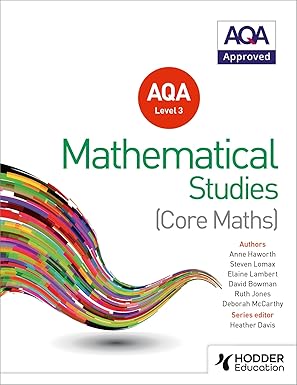
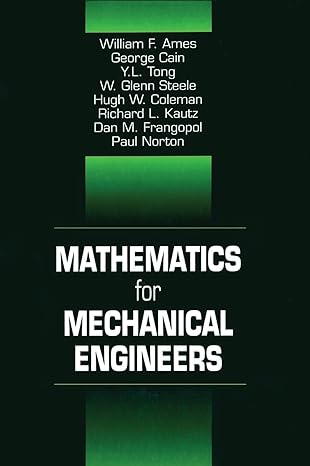
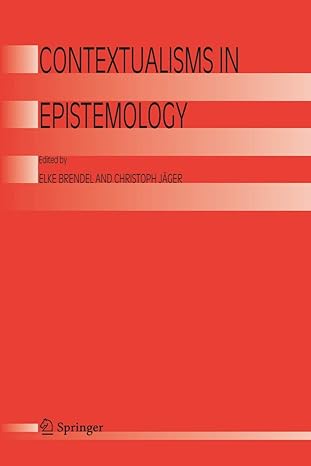
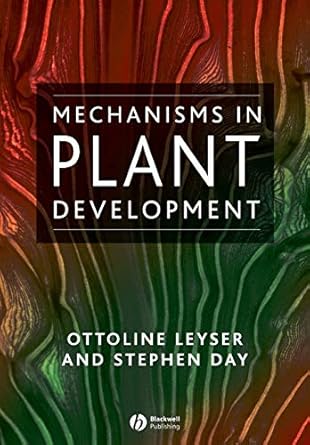

![[Soultion Manual] Statistics for Management and Economics (11th Edition) - Word [Soultion Manual] Statistics for Management and Economics (11th Edition) - Word](https://dl.libsan.ir/images/1/12/61JGRNKwfUL._SY466__66fd1fc169714.jpg)

